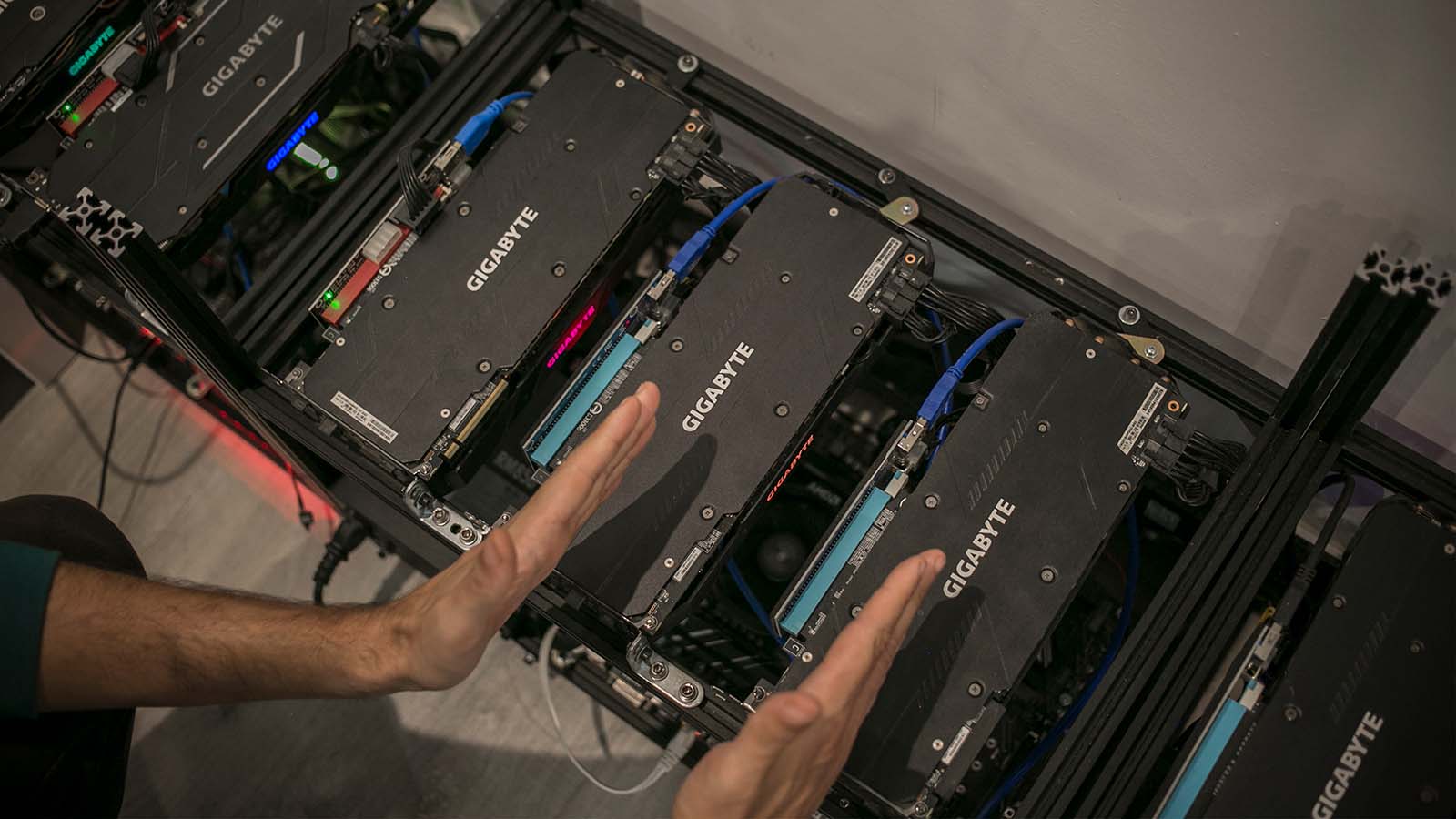No one is coming to save our graphics cards from the cryptomines
We must endure

There are a lot of reasons why the best graphics cards are nearly impossible to find right now. There's the issue of the ongoing chip shortage, a broader supply chain crisis at ports around the world, and even shoppers hunting for Black Friday deals driving up demand for consumer tech putting even more pressure on the availability of semiconductors needed by AMD and Nvidia for their products.
But there's also no getting around the fact that cryptomining has been a major driver as well, and a number of recent reports all point to graphics cards remaining scarce through next year at the earliest.
To its credit, Nvidia has at least attempted to make their new RTX 3000-series cards less attractive to cryptominers by implementing hash rate limiters, but these have been pretty quickly defeated. The restricted cards are getting more efficient by the day at mining Ethereum, the world's second most popular cryptocurrency after Bitcoin and the largest cryptocurrency that is primarily mined using graphics cards (Bitcoin is mostly mined on ASICs, which is a whole other issue).
A lot of hope has been put on the Ethereum network's switch to a proof-of-stake model rather than a proof-of-work model for its blockchain, which would remove the need for GPU mining at all. This would take a lot of the demand off the graphics card market and free up more stock for gamers, creatives, and others who need the cards for purposes other than mining a speculative digital asset.
We've been anticipating the Ethereum switchover all year, but now our colleagues over at PC Gamer are reporting that this switchover is now being delayed until at least the middle of next year.
In another blow to gamer's hopes at getting a new RTX 3090 any time soon, it looks like Nvidia's highest-end cryptomining processor (CMP), the HX170, is being auctioned off for double what the RTX 3090 is being sold for. With a rather impressive hash rate of 164MH/s, this isn't close to being double the hash rate of the RTX 3090, which is 125MH/s.
Given the investment, you're going to turn a profit quicker with an RTX 3090 than you will with the HX170, so Nvidia's solution to huge swaths of graphics card stock being impressed into the cryptomines doesn't look like it will make much of a dent.
Get daily insight, inspiration and deals in your inbox
Sign up for breaking news, reviews, opinion, top tech deals, and more.

Chip shortage easing in some places, but it won't be enough to meet graphics card demand
There was a spot of good news this week in an otherwise bleak outlook for graphics card stock. As of November 1, no General Motors plant will be idled over the lack of computer chips.
As one of the strongest indicators that we were in a semiconductor crisis, the fact that GM can start building cars again is great news. That means that more chips are making their way out into the world, something Nvidia and AMD will surely benefit from.
Will it be enough though? Honestly, probably not.
If Ethereum isn't going to shift from its current proof-of-work model for several more months at the earliest, then that demand isn't going anywhere – and there's every indication it could simply get worse.
The UK-based Standard Chartered bank put out a price prediction for Bitcoin and Ethereum last month that sees as much as a ten-fold increase in the price of Ethereum long-term and it expects Ethereum to eventually surpass Bitcoin in value.
Granted, a lot of those gains are expected to come from the network's planned shift to proof-of-stake, but that doesn't remove the incentive to mine as much Ethereum as you can right now so that you can take advantage of that later price increase.
In fact, if can mine just one Ethereum, a ten-fold increase in Ethereum's current price will more than cover the cost of an RTX 3090 – assuming you're patient enough to realize those gains, of course.
This means that until the Ethereum network drops the proof-of-work model, graphics card demand is going to remain high and only get higher, possibly matching or surpassing any increase in supply that comes from the increased production of silicon chips.
In other words, we're looking at several months of graphics cards possibly becoming more scarce than they already are.
- Given up looking for a new graphics card? Check out the best gaming laptops instead

John (He/Him) is the Components Editor here at TechRadar and he is also a programmer, gamer, activist, and Brooklyn College alum currently living in Brooklyn, NY.
Named by the CTA as a CES 2020 Media Trailblazer for his science and technology reporting, John specializes in all areas of computer science, including industry news, hardware reviews, PC gaming, as well as general science writing and the social impact of the tech industry.
You can find him online on Bluesky @johnloeffler.bsky.social